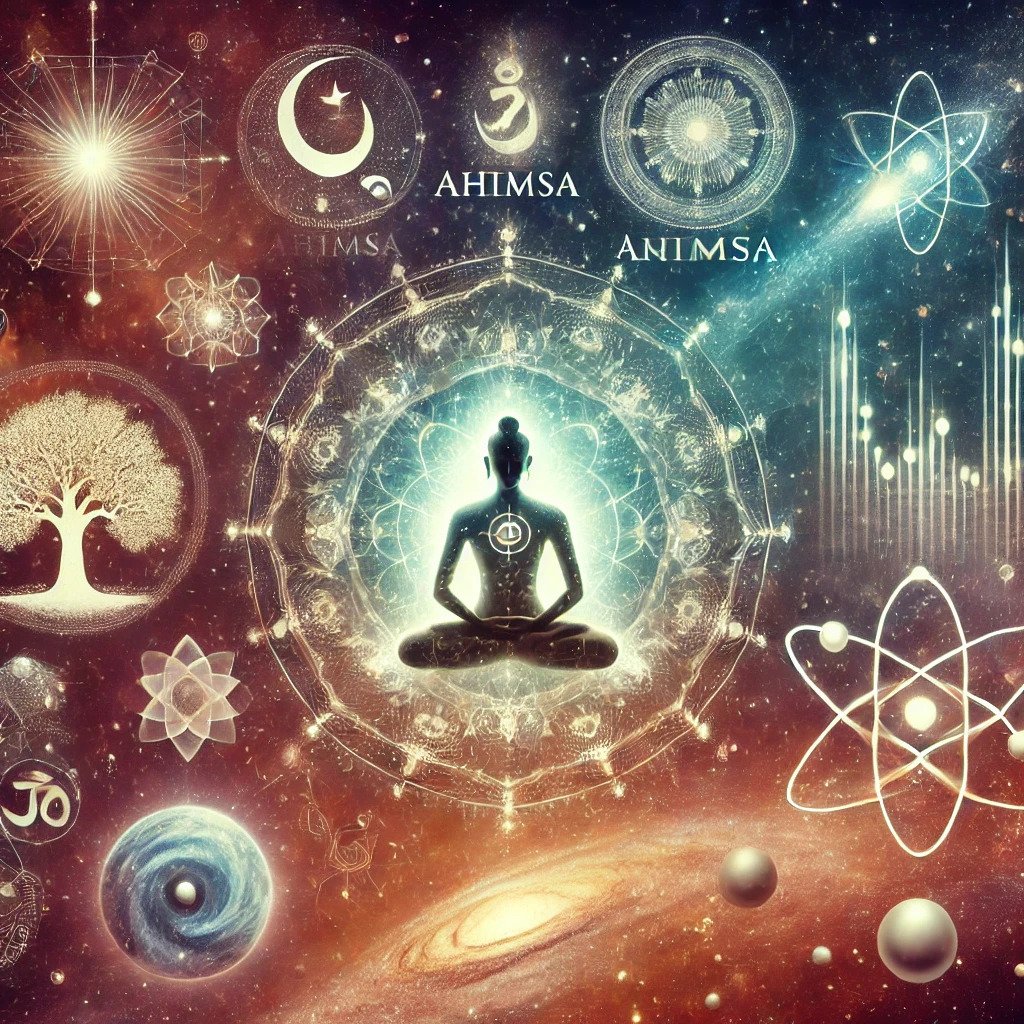Introduction
In the vast universe of spiritual wisdom, few concepts are as profound and transformative as Keval Gyan, or Ultimate Knowledge. For centuries, Jains have revered Keval Gyan as the pinnacle of spiritual enlightenment—a state where the soul achieves complete and perfect understanding of all truths in the universe. It represents the final liberation from the cycle of birth and death, or samsara, leading to eternal bliss.
But what exactly is Keval Gyan, and how can one attain it? To truly understand this sublime state, we must first delve into the essence of Jain philosophy and the spiritual journey it outlines for all souls.
What is Keval Gyan?
Keval Gyan is the highest form of knowledge, which enables the soul to perceive and comprehend all objects and events—past, present, and future—simultaneously and without any limitations. In this state, the soul is free from ignorance, delusion, and attachments that cloud ordinary human understanding. The soul becomes omniscient, possessing boundless wisdom and insight into the truths of the universe, beyond the constraints of time and space.
Keval Gyan is unique because it transcends the five types of ordinary knowledge:
- Matijnan (Empirical Knowledge) – This is knowledge acquired through the senses and mental faculties.
- Shrutjnan (Scriptural Knowledge) – Knowledge gained from teachings, scriptures, and learning.
- Avadhijnan (Clairvoyance) – Knowledge of distant objects or events.
- Manahparyavjnan (Telepathy) – The ability to read the thoughts of others.
- Kevaljnan (Omniscient Knowledge) – The supreme, unlimited knowledge that surpasses all other forms.
While the first four types of knowledge are often bound by physical and karmic limitations, Keval Gyan is pure and infinite. It is said that once a soul attains Keval Gyan, it has reached the point of moksha, or liberation, and is no longer bound to the endless cycle of life and death.
The Path to Keval Gyan
Achieving Keval Gyan is no simple feat; it requires the utmost discipline, self-control, and adherence to the principles of Jainism. The path is outlined by the three jewels or Ratnatraya:
- Right Faith (Samyak Darshan) – The unwavering belief in the true nature of reality, as understood through Jain teachings.
- Right Knowledge (Samyak Gyan) – Understanding the soul’s potential for liberation and gaining knowledge of the universe’s true workings.
- Right Conduct (Samyak Charitra) – Practicing ethical and moral behavior, refraining from violence, and engaging in self-discipline.
A seeker must cultivate these three qualities, ensuring they are free from doubt, delusion, and attachments that hinder the soul’s purity. The five vows (vratas) of non-violence (ahimsa), truthfulness (satya), non-stealing (asteya), chastity (brahmacharya), and non-possession (aparigraha) must be practiced diligently to purify the soul.
Overcoming karmas is at the heart of the journey to Keval Gyan. In Jainism, karmas are the subtle particles that bind to the soul due to negative actions, emotions, and thoughts. These karmas obscure the soul’s natural ability to perceive truth. By practicing asceticism, non-attachment, and penance, a Jain practitioner can burn off these karmas, thereby clearing the way for the soul’s true knowledge to shine through.
Attaining Liberation: The Role of Tirthankaras
Jain scriptures describe 24 Tirthankaras who have attained Keval Gyan and guided others toward liberation. These enlightened beings serve as role models for those on the spiritual path, having achieved freedom from samsara and the omniscience of Keval Gyan. They teach that every soul has the potential to achieve this state by adhering to the principles of non-violence, truth, and renunciation.
The first Tirthankara, Lord Rishabhanatha, set the spiritual foundation for Jainism, while the last, Lord Mahavira, solidified the teachings that are still followed today. Lord Mahavira, after intense meditation and austerity, attained Keval Gyan under a Sala tree and spent the rest of his life spreading the message of compassion, ethical living, and the path to liberation.
The Role of Keval Gyan in Daily Life
For most of us, Keval Gyan may seem like an unattainable ideal. However, Jain teachings emphasize that even the effort to move toward this ultimate state can have profound effects on daily life. By practicing the three jewels and the five vows, one can live in greater harmony with the world, develop a deeper sense of compassion, and reduce the karmic load that binds the soul.
One way to progress toward Keval Gyan is through meditation (dhyana) and self-study (svadhyaya). By regularly meditating on the nature of the self and the universe, a practitioner begins to peel away the layers of ignorance that cloud true understanding. Similarly, the study of scriptures and the teachings of enlightened masters can provide insights that guide one’s conduct and thinking.
Supporting Resources for Learning About Keval Gyan
To further explore the concept of Keval Gyan, you may find these resources helpful:
"Tattvartha Sutra" by Umaswati – A central text in Jainism, this scripture discusses the philosophical foundations of Jain teachings, including the nature of the soul, karma, and liberation. Read online
"Samayasāra" by Acharya Kundakunda – This text dives deep into the essence of the soul and the ultimate path to liberation. Read more about it
"The Jain Path to Purification" by Padmanabh Jaini – An excellent resource for those seeking a scholarly perspective on Jain practices, including the attainment of Keval Gyan. Available on Google Books
"Jainism and Ecology" by Christopher Key Chapple – This book discusses the intersection of Jain ethical principles with ecological responsibility and how Keval Gyan leads to a deeper understanding of life. Find the book here
"The Uttaradhyayana Sutra" – One of the key Jain scriptures that explains the path to spiritual knowledge and includes teachings on the discipline required to reach Keval Gyan. Read the sutra here
"Lord Mahavira: His Times and His Philosophy of Life" by Kailash Jain – This book details the life of Lord Mahavira, whose journey to attaining Keval Gyan serves as an inspiration for practitioners today. Access the book here
Jain Pathshala Resources – If you’re interested in practical and easy-to-understand lessons on Jainism, many Jain pathshalas have online resources and videos explaining topics like Keval Gyan. Visit JSNT's educational materials
Conclusion
Keval Gyan is not just the culmination of spiritual effort but the natural state of every soul when it is freed from the impurities of karma. In this state, the soul becomes all-knowing, all-seeing, and perfectly blissful. While achieving Keval Gyan requires immense dedication, every step taken toward this goal brings the individual closer to liberation and eternal peace.
Through the teachings of the Tirthankaras and the practice of right faith, knowledge, and conduct, each of us has the potential to walk the path toward Keval Gyan, unveiling the true nature of the soul and the universe in the process


